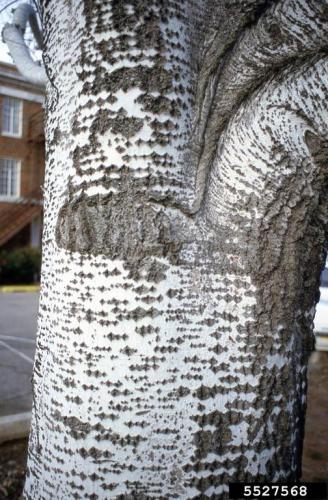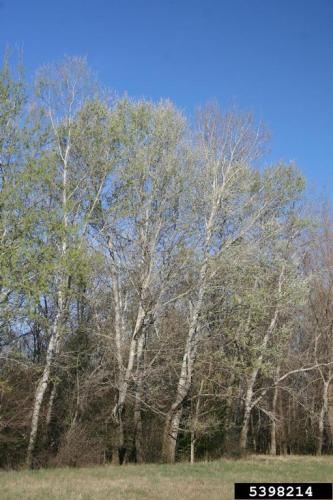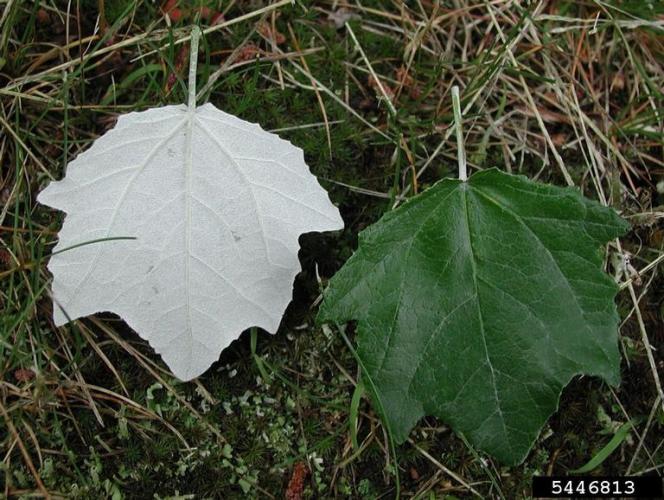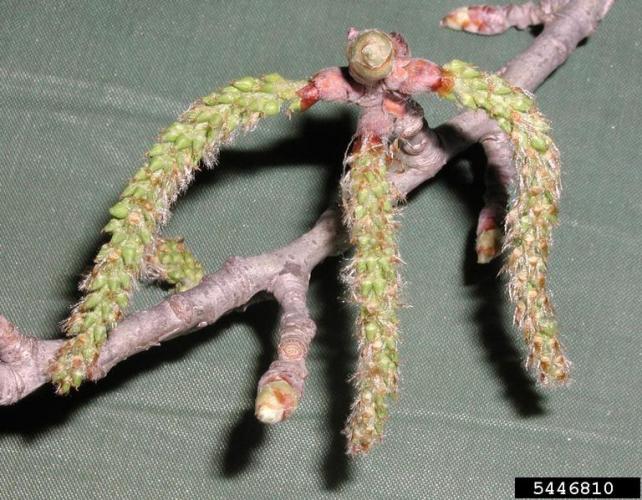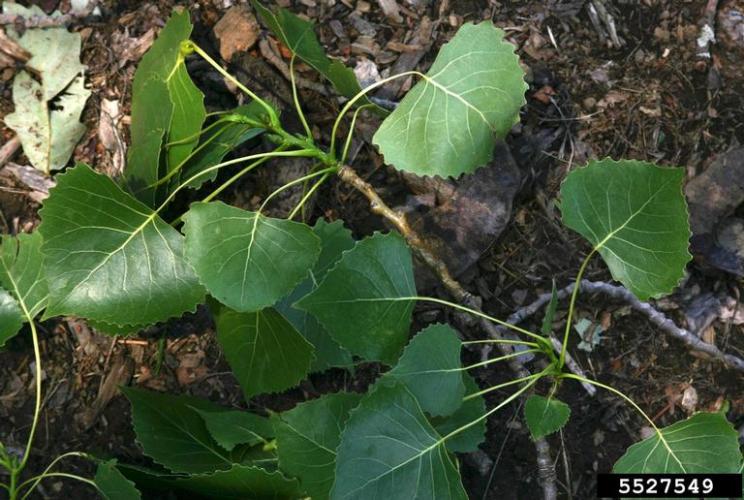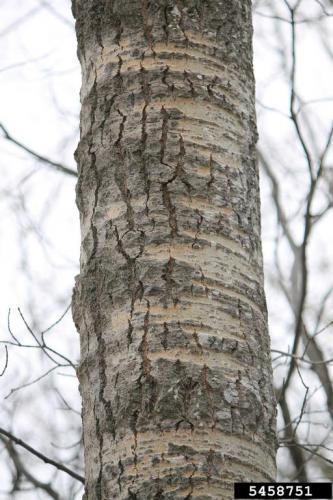White poplar
Identification
Appearance
Populus alba is a tree that can grow 40-80 feet tall and 40-50 feet wide. The bark on young trees is smooth and greenish white becoming gray and wrinkled, as trees age.
Foliage
The leaves resemble maple leaves, but the topside of leaves are shiny, dark green while the underside is bright white and hairy. Leaves are 2-4 inches long.
Flowers
Flowers are inconspicuous and develop in slim, cylindrical flower clusters (catkins) before the leaves develop.
Fruit
Fruit are small, hairy seed pods that are spread by wind.
Biology
This is considered a watch list species
Origin
Native to Europe
Habitat
Agricultural Field, Early Successional Forest, Edge, Floodplain Forest, Open Disturbed Area, Pasture, Roadside, Shrub Wetland, Vacant Lot, Wet Meadow, Yard or Garden. Populus alba prefers areas of disturbance where it can get ample sun. It can tolerate a variety of soils and different levels of pH, as well as a fair amount of salt.
Life cycle
Root suckers arise from adventitious buds on the extensive lateral root system. Large numbers of suckers from a single tree can quickly develop into a dense colony. Suckering can occur naturally or as a result of damage or other disturbance to the parent plant. Mature white poplar trees produce thousands of wind-dispersed seeds that may be carried long distances. However, seed germination of white poplar appears to be very low in the U.S.
Ecological Threat
Populus alba can form large clonal communities that are capable of excluding native species from edge habitats. When attempts are made to cut it back, it vigorously resprouts and spreads even more. Since it is competitive in early successional situations, it can interfere with succession in disturbed habitats. It is a very brittle tree that is easily broken and can cause damage to nearby structures or other trees.
Vermont Distribution
Citations
Photo Credit
5398214, Robert Vidéki, Doronicum Kft., Bugwood.org
5527568, T. Davis Sydnor, The Ohio State University, Bugwood.org
5446810, 5446813, Leslie J. Mehrhoff, University of Connecticut, Bugwood.org
5458751, Rob Routledge, Sault College, Bugwood.org
5527549, T. Davis Sydnor, The Ohio State University, Bugwood.org
Information Credit
Invasive Plant Atlas of New England
